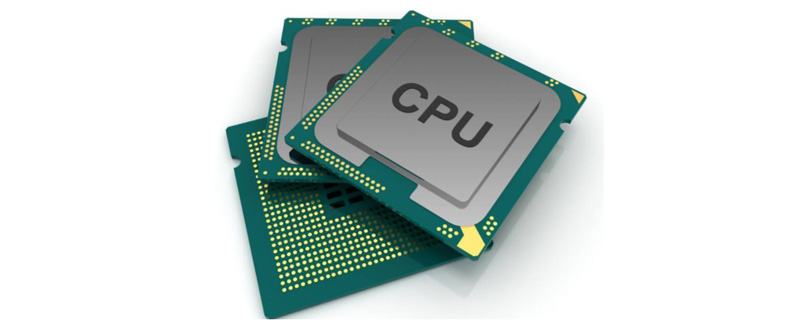
The main performance indicators of CPU are: 1. Main frequency; 2. FSB; 3. Front-side bus FSB frequency; 4. CPU bit and word length; 5. Multiplication coefficient; 6. Cache; 7. Hyper-threading; 8. Process technology, etc.

The main performance indicators of the cpu are: main frequency, FSB, front-side bus (FSB) frequency, CPU bit and word length, multiplication factor, cache, Hyper-threading, process technology.

1. Main frequency
is the clock frequency of the CPU. Simply put, it is the CPU operating frequency.
Generally speaking, the number of instructions completed in one clock cycle is fixed, so the higher the main frequency, the faster the CPU. However, since the internal structures of various CPUs are also different, the performance of the CPU cannot be completely summarized by the main frequency.
The main frequency is related to the actual computing speed. It can only be said that the main frequency is only one aspect of CPU performance and does not represent the overall performance of the CPU.
2. FSB
The FSB is the base frequency of the CPU, the unit is MHz. The CPU's FSB determines the running speed of the entire motherboard. In layman's terms, in desktop computers, the so-called overclocking refers to overclocking the CPU's FSB (of course, under normal circumstances, the CPU multiplier is locked). I believe this is well understood.
But for server CPUs, overclocking is absolutely not allowed. As mentioned earlier, the CPU determines the running speed of the motherboard, and the two run synchronously. If the server CPU is overclocked and the FSB is changed, asynchronous operation will occur, which will cause instability in the entire server system.
3. Front-side bus (FSB) frequency
Front-side bus (FSB) frequency (i.e. bus frequency) directly affects the CPU and memory. Data exchange speed. There is a formula that can be calculated, that is, data bandwidth = (bus frequency × data bandwidth)/8. The maximum bandwidth of data transmission depends on the width and transmission frequency of all data transmitted simultaneously.
4. CPU bit and word length
Bits: Binary is used in digital circuits and computer technology, and the codes are only "0" and "1", whether it is "0" or "1", is a "bit" in the CPU.
Word length: In computer technology, the number of binary digits that the CPU can process at one time per unit time (at the same time) is called the word length.
So a CPU that can process data with a word length of 8 bits is usually called an 8-bit CPU. In the same way, a 32-bit CPU can process binary data with a word length of 32 bits per unit time.
The 8-bit CPU can only process one byte at a time, while the 32-bit CPU can process 4 bytes at a time. Similarly, the CPU with a word length of 64 bits can process 8 bytes at a time.
5. Multiplier coefficient
The multiplier coefficient refers to the relative proportional relationship between the CPU main frequency and the FSB. Under the same FSB, the higher the frequency multiplier, the higher the CPU frequency. But in fact, under the premise of the same FSB, a high-multiplier CPU itself is of little significance.
This is because the data transmission speed between the CPU and the system is limited. Blindly pursuing high multipliers and obtaining high frequency CPUs will have an obvious "bottleneck" effect - the CPU obtains data from the system. The ultimate speed cannot meet the speed of CPU operation.
6. Cache
The cache size is also one of the important indicators of the CPU, and the structure and size of the cache have a great impact on the CPU speed. , the running frequency of the cache in the CPU is extremely high. It generally operates at the same frequency as the processor, and its working efficiency is much greater than that of the system memory and hard disk.
During actual work, the CPU often needs to read the same data block repeatedly, and the increase in cache capacity can greatly improve the hit rate of reading data within the CPU without having to search for it in the memory or hard disk. , to improve system performance. However, due to factors such as CPU chip area and cost, the cache is very small.
7. Hyper-Threading
You can execute multiple threads at the same time, which can make the CPU more efficient. That is Hyper-Threading (Hyper-Threading) technology. Hyper-Threading The technology reduces the waste of system resources and can simulate one CPU into two CPUs, making more effective use of resources to improve performance at the same time.
8. Process technology
#The smaller the process, the smaller the heat generation, so more transistors can be integrated and the CPU efficiency will be higher. high.
The above is the detailed content of What are the main performance indicators of CPU. For more information, please follow other related articles on the PHP Chinese website!
 What to do if the CPU temperature is too high
What to do if the CPU temperature is too high
 A memory that can exchange information directly with the CPU is a
A memory that can exchange information directly with the CPU is a
 The main components that make up the CPU
The main components that make up the CPU
 Introduction to hard disk performance indicators
Introduction to hard disk performance indicators
 What are the video server configuration parameters?
What are the video server configuration parameters?
 How to solve cpu fan error
How to solve cpu fan error
 What to do if the CPU usage is too high
What to do if the CPU usage is too high
 Introduction to CPU performance index parameters
Introduction to CPU performance index parameters